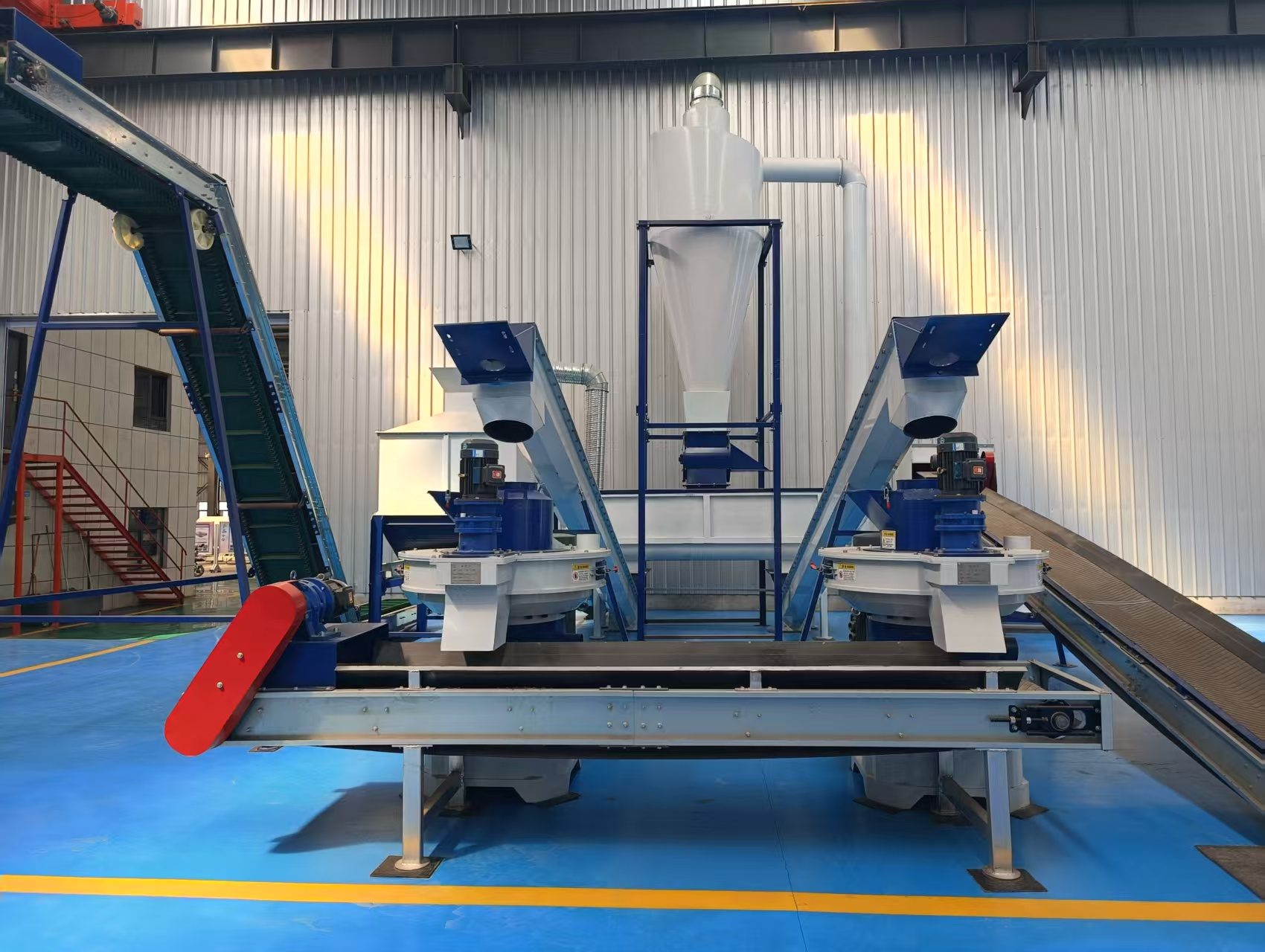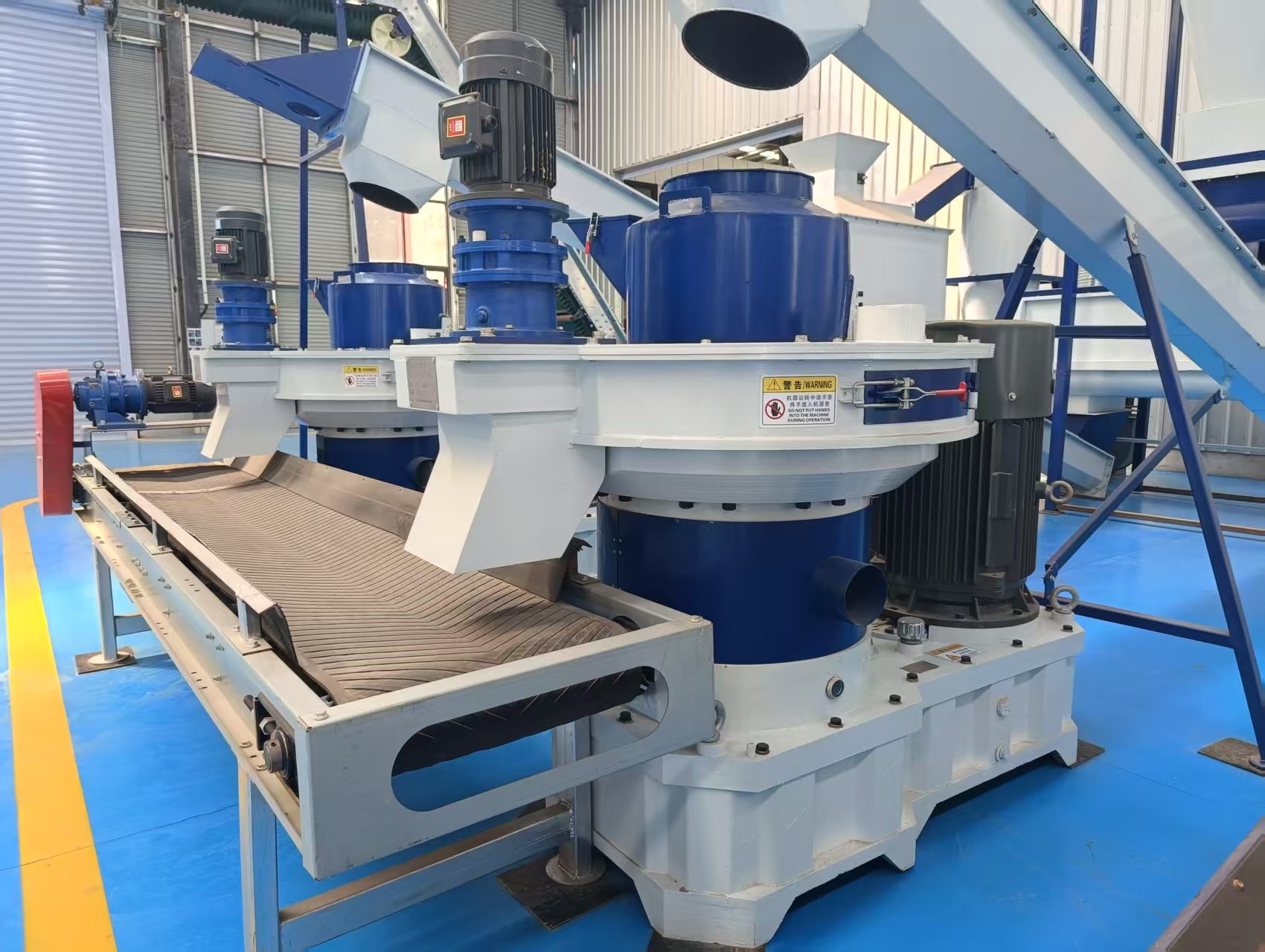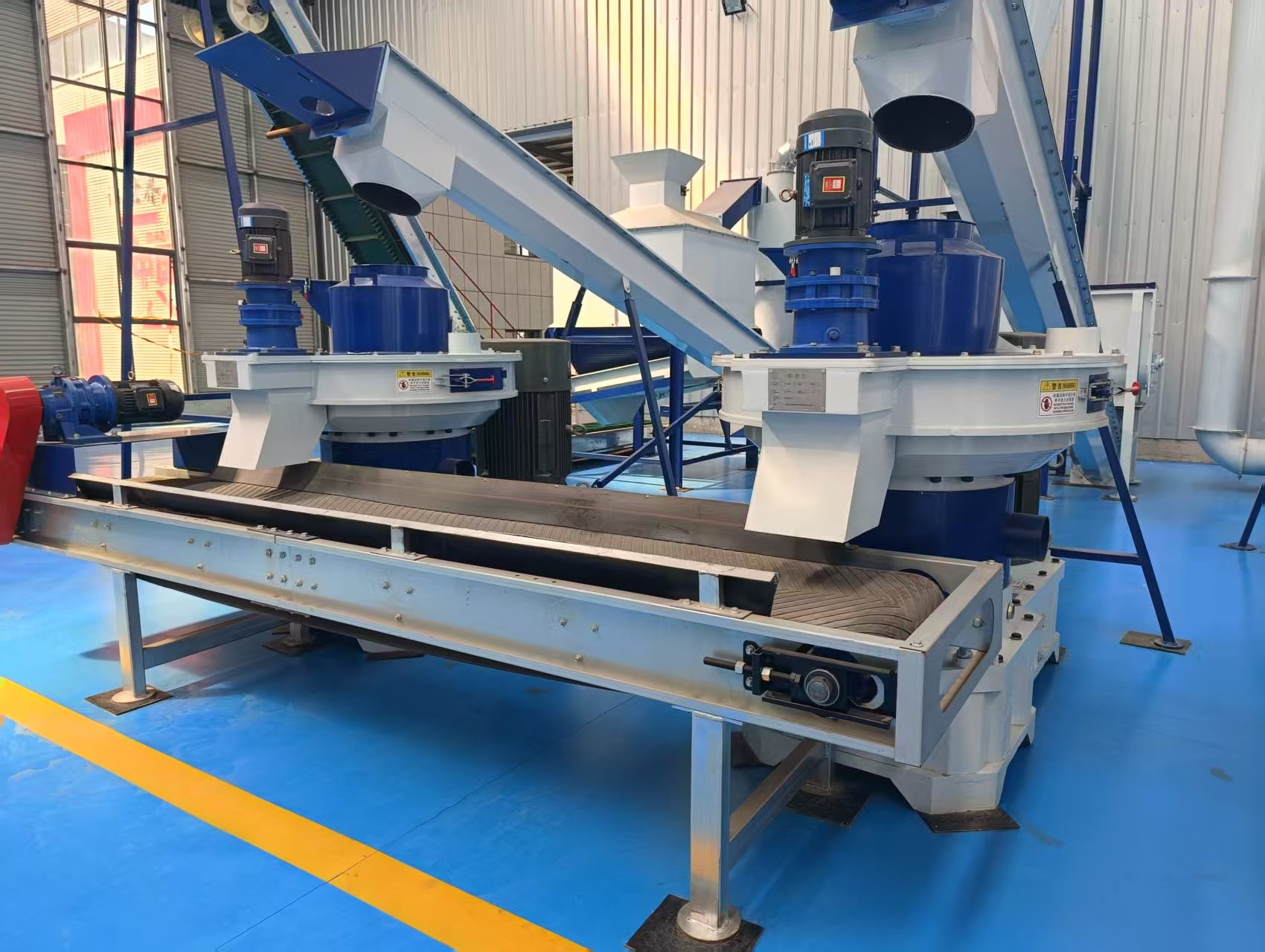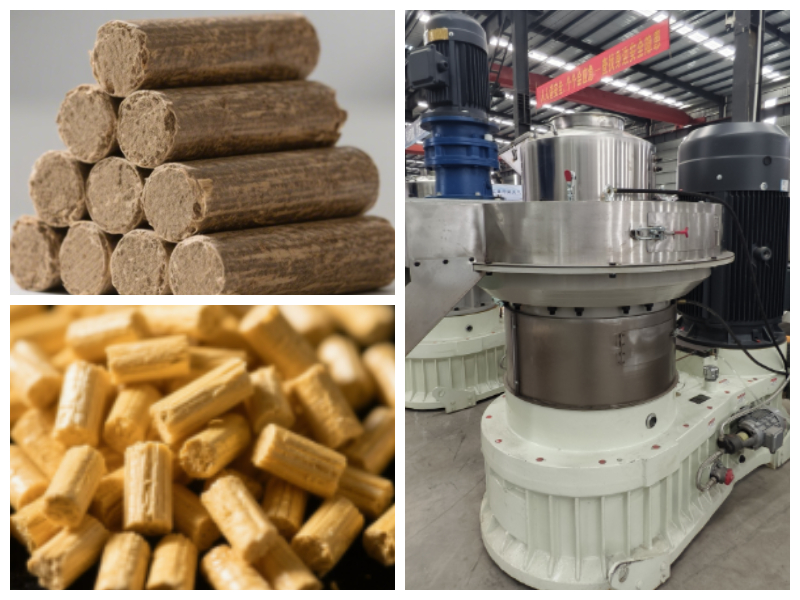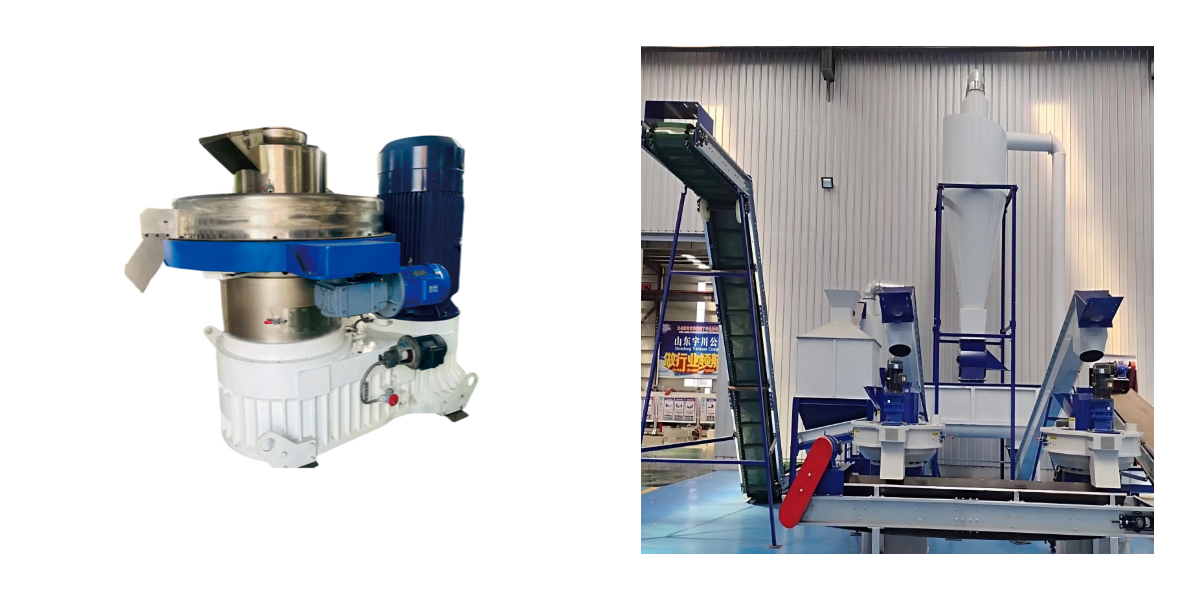Pellet Machine
Pellet Machine
Working principleSawdust after crushing, conditioning enter the pelletizing host, through the pressure roller and ring die (or flat die) relative rotation, under high pressure is squeezed through the die hole, forming a diameter of 3-12mm cylindrical pellets, after cooling solidification to complete the molding, the whole process without the need to add binder, relying on the inherent bonding of wood fibers.
Core performance parametersCap: 0.5-2 tons per hour for small machines, 3-8 tons for medium machines, 10-20 tons for large machines;
ellet density: 1.1-1.3g/cm³, compressive strength ≥3MPa, moisture content ≤10%;
Energy consumption about 80-120 degrees of electricity per ton of pellets, 10%-15% lower than similar biomass pelletizing equipment.
Sawdust Pellet Machine:
Sawdust Pellet Machine is a specialized equipment that processes agricultural and forestry waste (such as sawdust, sawdust, rice husks, straw, etc.) into high-density pellet fuel through physical extrusion technology.
Ultra-high forming rate and maximized raw material utilization:
Equipped with cutting-edge ring die technology and a micron-level adjustable pressure roller system, the sawdust forming rate remains stable at over 95%. High-end models utilize intelligent pressure feedback adjustment technology to adapt in real-time to changes in raw material moisture content and particle size, achieving a forming rate exceeding 98%, significantly reducing raw material waste and enhancing unit production efficiency.
Exceptional particle quality and strong market competitiveness:
The produced particles have a stable density of 1.1–1.3 g/cm³, enabling more complete combustion and extending burn time by over 30%. With a compressive strength of ≥3 MPa, breakage rates during transportation and storage are reduced by 15%, minimizing dust pollution and secondary processing costs. Moisture content is precisely controlled at ≤10%, preventing mold growth and reduced combustion efficiency, with a shelf life of up to 12 months, meeting stringent standards for industrial and residential fuel.
Intelligent adaptation for hassle-free, efficient operation:
Built-in sensors continuously monitor compression force, automatically adjusting roller pressure to easily handle fluctuations in sawdust moisture and particle size, eliminating the need for frequent manual adjustments, lowering operational barriers, ensuring stable continuous production, and suitable for large-scale processing scenarios.
Wide compatibility and diverse application scenarios:
Not only efficiently processes sawdust, but also demonstrates excellent adaptability to biomass raw materials such as straw and bark. It can be used to produce industrial boiler fuel, residential heating pellets, and biomass power generation raw materials, meeting the needs of multiple sectors including agriculture, energy, and environmental protection, thereby expanding profit potential.
The technical principles and process flow of Sawdust Pellet Machine:
1.Physical extrusion molding
The crushed raw materials are compressed into particles under high pressure (usually up to tens of tons), without the need for adhesive, relying solely on the softening and bonding of the material's own lignin.
2.Key process steps
Raw material pretreatment: Grind to 2-8mm particles and control the moisture content at 10% -15% (if it is too high, it needs to be dried).
Granulation molding:
Flat mold pellet machine: The mold is placed horizontally and the pressure wheel rotates vertically, suitable for small-scale production.
Ring mold pellet machine: The mold is circular, and the pressure wheel rotates around the mold, with high production capacity and suitable for continuous production.
Cooling and screening: Natural air cooling reduces particle temperature to room temperature and screens out non-conforming products.
Packaging and Storage: Automatic metering packaging for easy transportation and long-term storage.
Purpose:
1. Energy Conversion: Convert low calorific value waste into high calorific value particulate fuel (with a calorific value of 3200-5500 kcal/kg), replacing traditional energy sources such as coal and natural gas.
2. Environmental value: After combustion, the ash content is rich in elements such as calcium, magnesium, and potassium, which can be used as raw materials for organic fertilizers; The nano silica and ferric oxide extracted from ash have market value.
3. Application scenarios:
Industrial sector: Fuel supply for boiler plants, heating companies, and power plants.
Civilian areas: home heating, bathing centers, tobacco curing rooms, tea drying, etc.
In the field of agriculture: feed processing and organic fertilizer production in breeding farms.

